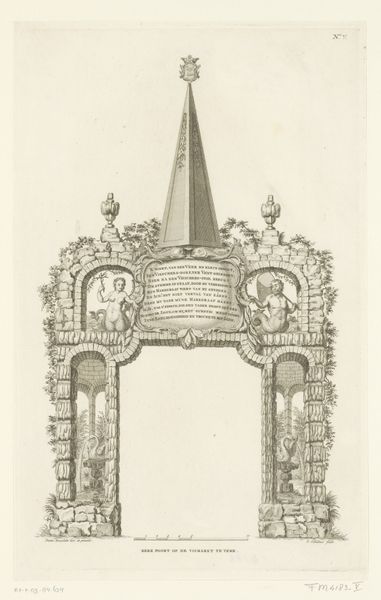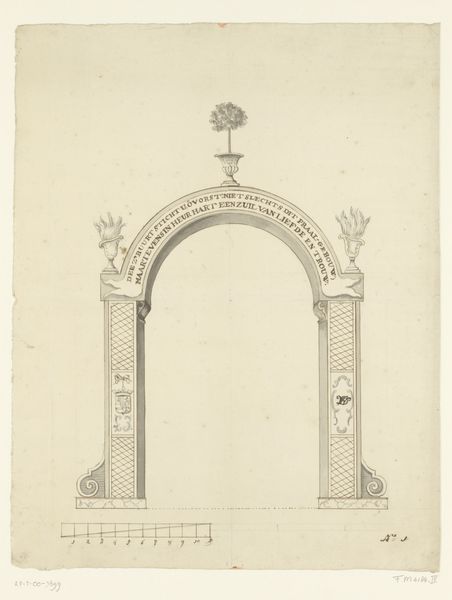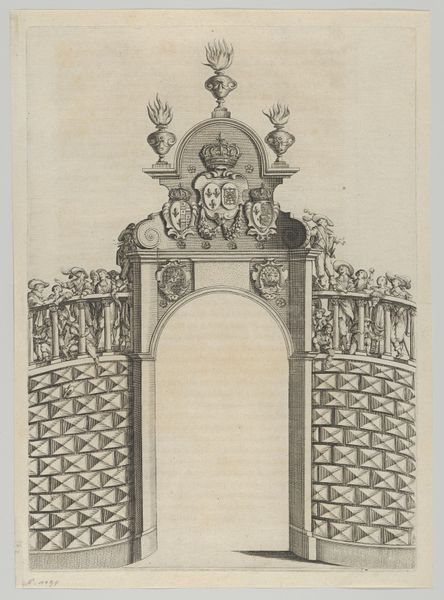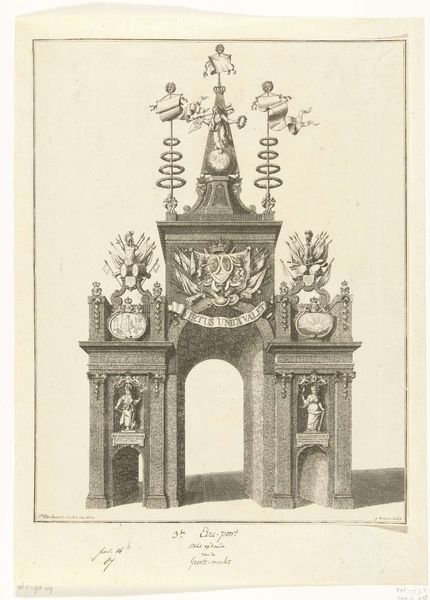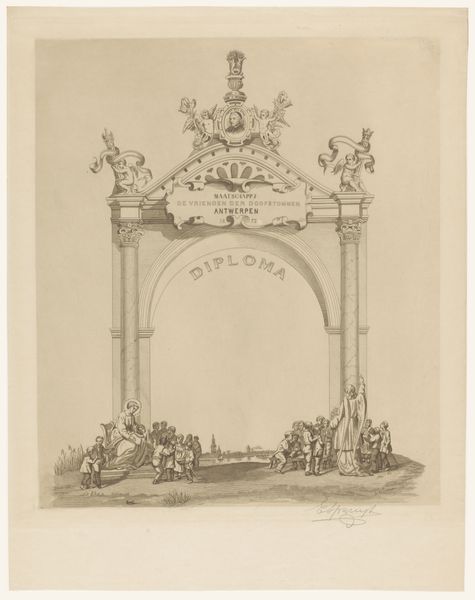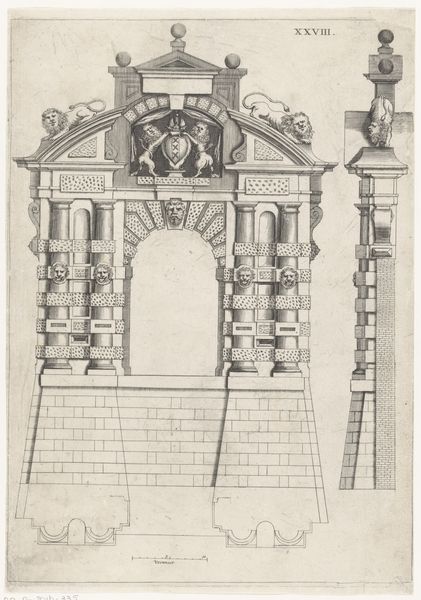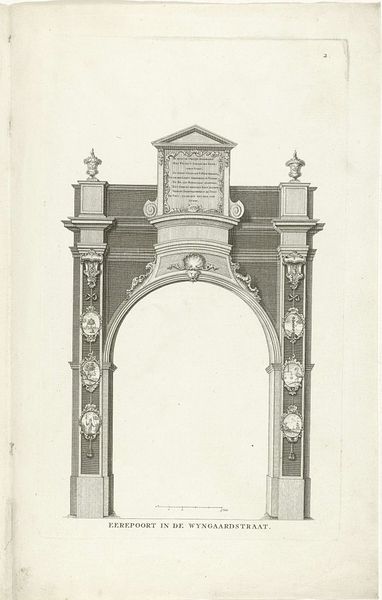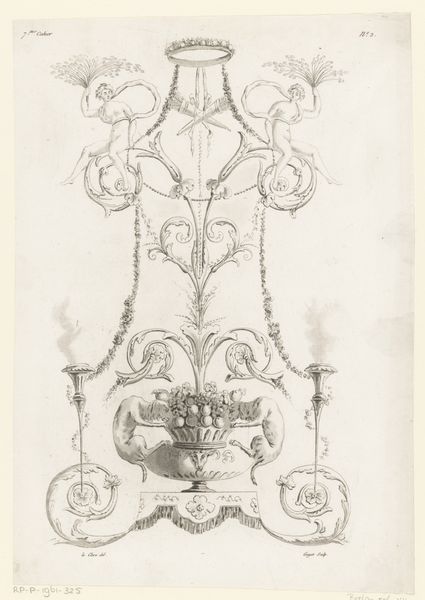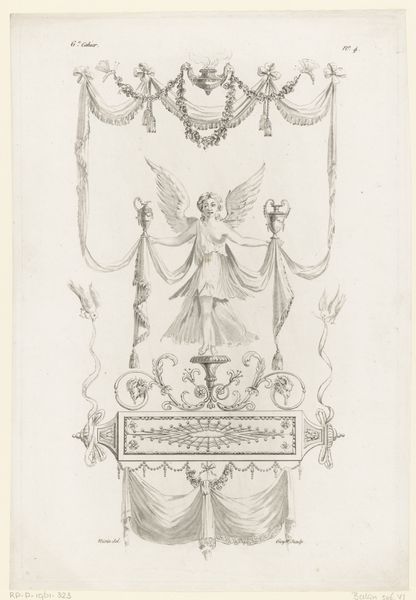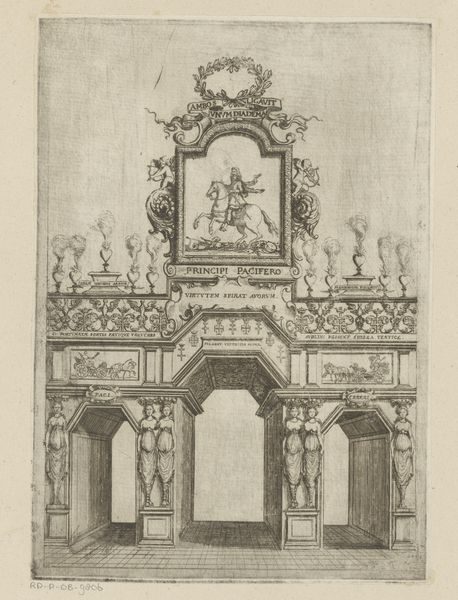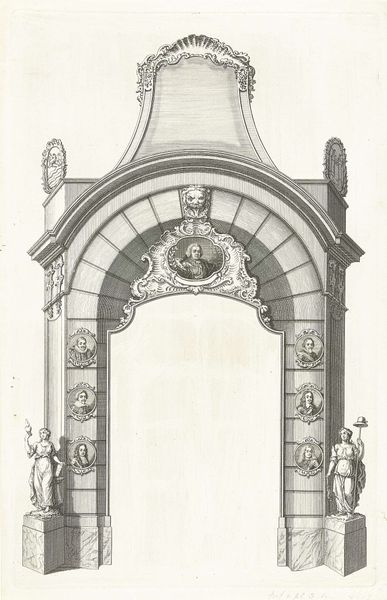
Erepoorten bij de intocht van Willem V te Veere (Nr. X), 1766 1766 - 1767
0:00
0:00
Dimensions: height 377 mm, width 233 mm
Copyright: Rijks Museum: Open Domain
Editor: So, this is "Erepoorten bij de intocht van Willem V te Veere," or "Archways at the Entrance of William V in Veere," dating from 1766-1767 by Gerard Sibelius. It’s a print—a drawing, really—using pencil and engraving. I find it very formal, quite rigid in its composition. What is your reading of the historical implications in this artwork? Curator: Well, it presents a meticulously constructed scene of civic pride, clearly commissioned for public consumption. Consider that "Veere" was essentially bought by the Stadtholder centuries earlier, cementing his familial influence over this Zeeland trading city. Ask yourself who would have consumed such a work? Editor: Surely the townspeople, a symbol of local and national pride? Curator: Yes, it speaks volumes about the Dutch Republic's self-image during the late 18th century. The elaborate arch, festooned with nationalist symbols, isn’t just decoration; it’s a visual declaration of loyalty to the House of Orange, meant to shape public sentiment. Notice the orphans at the bottom: 'Kere poort opgerigt door de weeskinderen te Veere'. What social dynamic is at play? Editor: It feels a bit… exploitative? Using orphans to erect a gate feels almost performative. Curator: Exactly! The image reinforces established hierarchies, subtly reminding everyone of their place within the social order. And this event becomes part of the historical narrative, shaped by those in power. Editor: That reframes my view quite significantly. I went from simply seeing a decorative rendering to understanding its underlying purpose as a powerful statement of control. Curator: Precisely. It's a lens through which we can examine the political climate of the time and the ways in which imagery was used to reinforce authority.
Comments
No comments
Be the first to comment and join the conversation on the ultimate creative platform.
